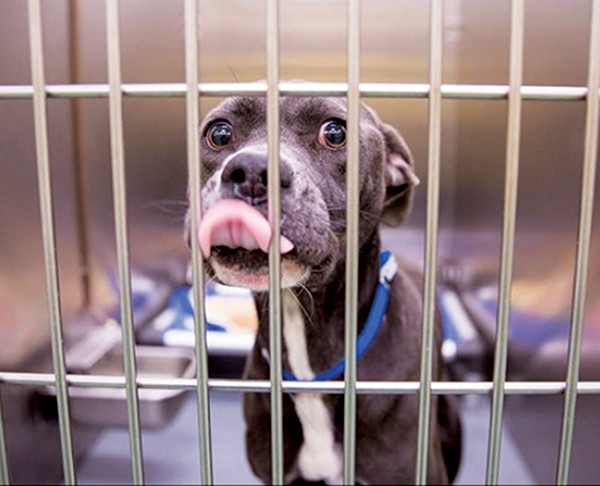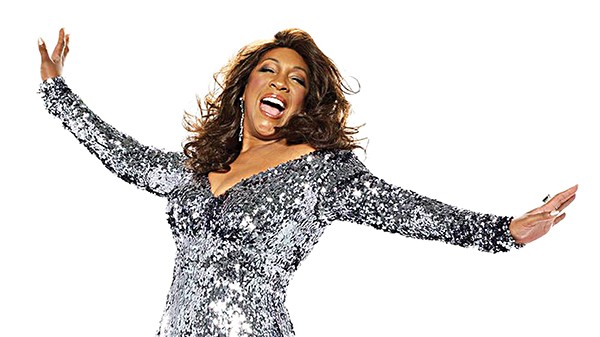If you are the observant type, you might have noticed that this year’s 20<30 cover photo actually has 21 people in it. That’s because we had a tie between two women who both deserved to be honored, and whose ages made this their final shot. So, boom, a tie! And the result is 21<30.
As we have every year since 2009, we asked Flyer readers to nominate exceptional Memphians under the age of 30, so we can get to know — and recognize — the young people who will be shaping the future of our city. Choosing the 20 we feature in these pages is always an exercise fraught with difficult decisions. Lots of deserving young people don’t make the cut. We could easily do 40<30. Memphis is blessed with a plethora of talented young people.
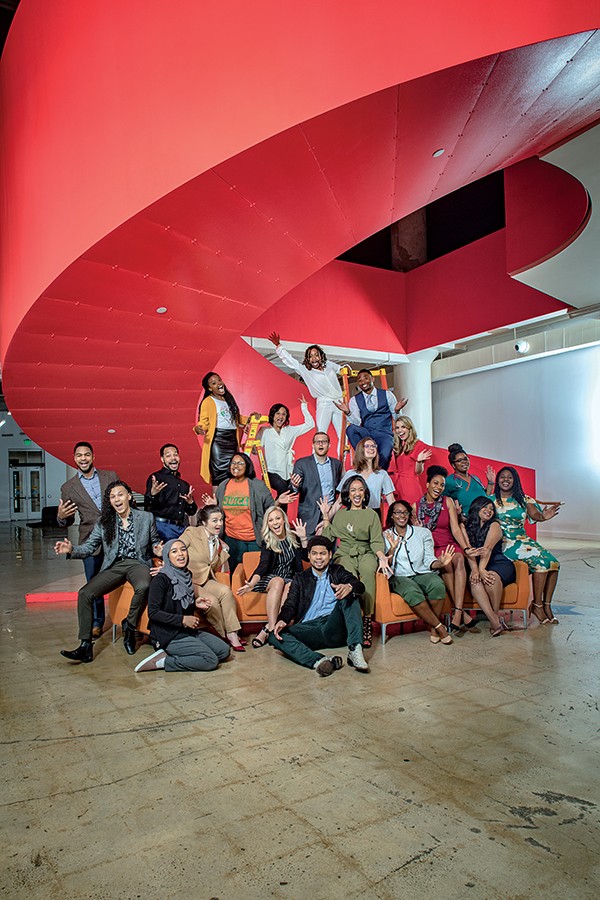 Photographs by Justin Fox Burks
Photographs by Justin Fox Burks
This year, we decided to let each of our honorees speak about themselves. And after listening to these 21 outstanding young Memphians, it would appear our city’s future is brighter than ever. — Chris McCoy
……
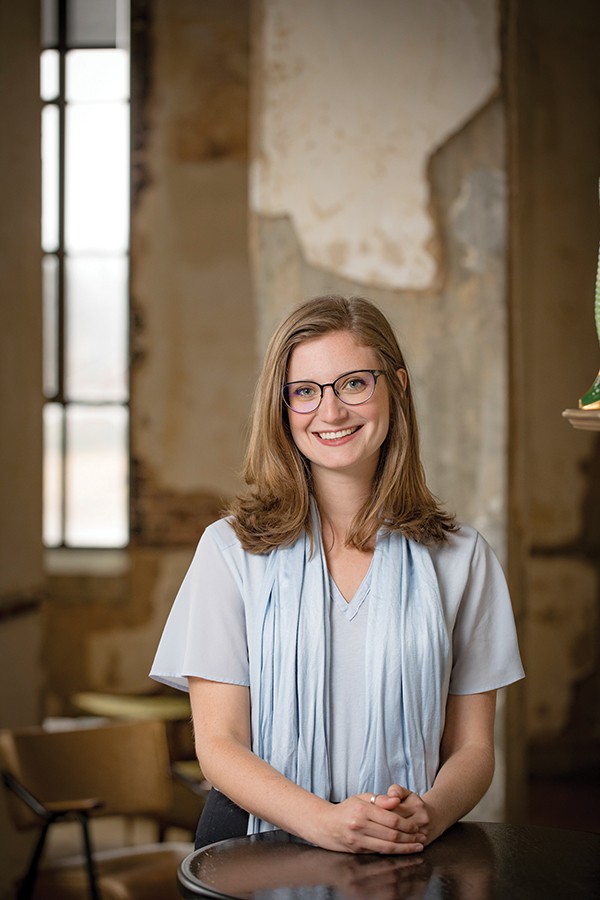
Madeline Faber
Madeline Faber
Managing Editor, High Ground News
“I feel very grateful to have the foundation that Memphis has given me. I think it’s really easy to plug in to this city. … There’s room for everyone to get the support they need for their projects. I don’t think you find that in other cities.
“We open an office in a Memphis neighborhood for four months, and we work with residents to craft a narrative that reflects their lived experience. “People celebrate neighborhoods that they’re not from. People who don’t live in Orange Mound love reading stories about the old Melrose High School reopening.
“I think we’re kind of trained to see Memphis as a very segregated city, and in many ways that is still true and effects all of our residents, but I think people across the city like seeing how neighborhoods are innovating new solutions.”
……
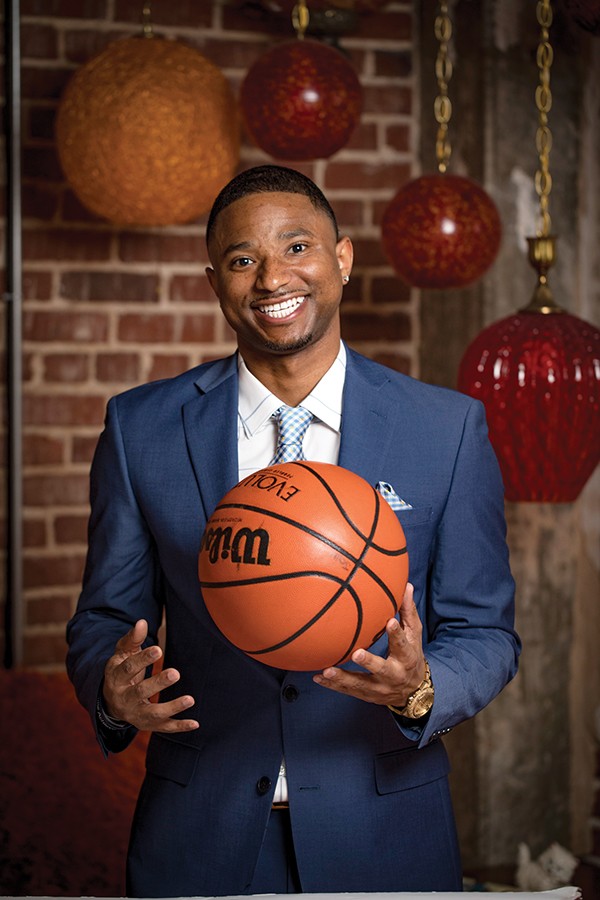
Trey Draper
Trey Draper
Basketball Coach, Mitchell High School
“Sports brings unity. It brings people from all different backgrounds together, from different ethnic groups, different genders. You can be anywhere and have on a jersey and another fan sees you, and that sparks a conversation. … To someone like me who grew up in inner city Memphis, it was my way out. It was a way for me to grow up. Basketball and other sports kept me out of trouble. It saved my life. … That’s what I try to do when I get involved with these young men and women. As a coach and a mentor, I try to give them everything I was given, and a little bit more.
“We had 27 seniors. And 25 of them went to college for free, and two of them went into the military. … Saving everyone is impossible. But if I could just put my hands on those 27, and help them, maybe they can each put their hands on another 27. Then we’re starting to get somewhere.
“Work is fun for me. A lot of people can’t say that.”
……
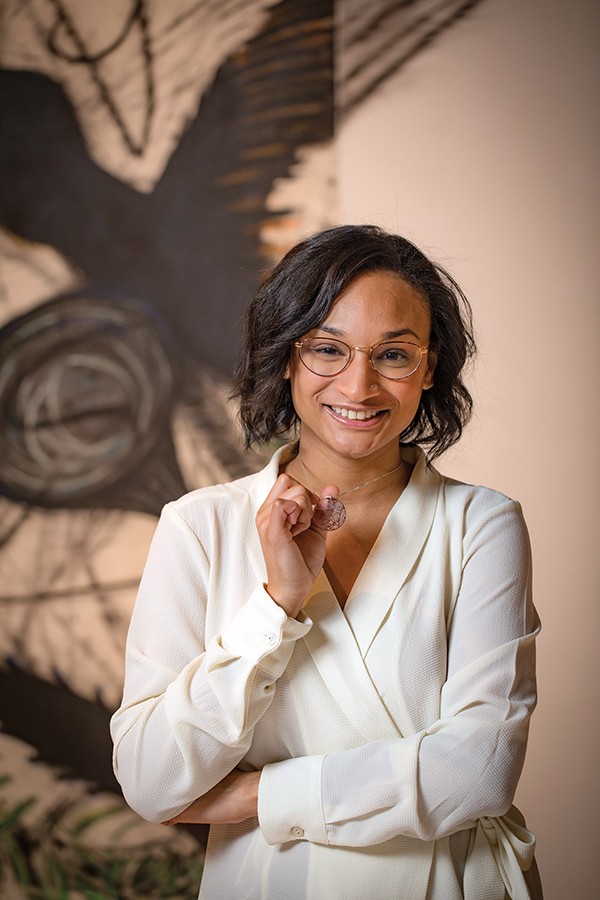
Somer Smith
Somer Smith
Assistant Director of Planning and Development, City of West Memphis
“Studying sociology was a blessing and curse at the same time. It opened my eyes to all these problems in the world and helped me see things as they really are. But it also left me without a way to solve the problems. So that’s how I stumbled upon urban planning. I wanted to make a change on the macro level — the entire city. That led me to planning on a large scale.”
Smith got her masters degree in urban planning at the University of Memphis. “After I graduated, I wanted to be in a city that could benefit from some good planning. I love Memphis to death, but it can definitely benefit from some better planning.
“I definitely want to stay in Memphis. I see it as a place that has changed tremendously from then to now. I think Mayor Strickland has done a fantastic job prioritizing planning, and we see the results of the power of planning every day with the bike shares. We have more connectivity all over the city, and these are just the beginning steps. … I want people to know that if they want to make a change, they have the power to do that.”
……
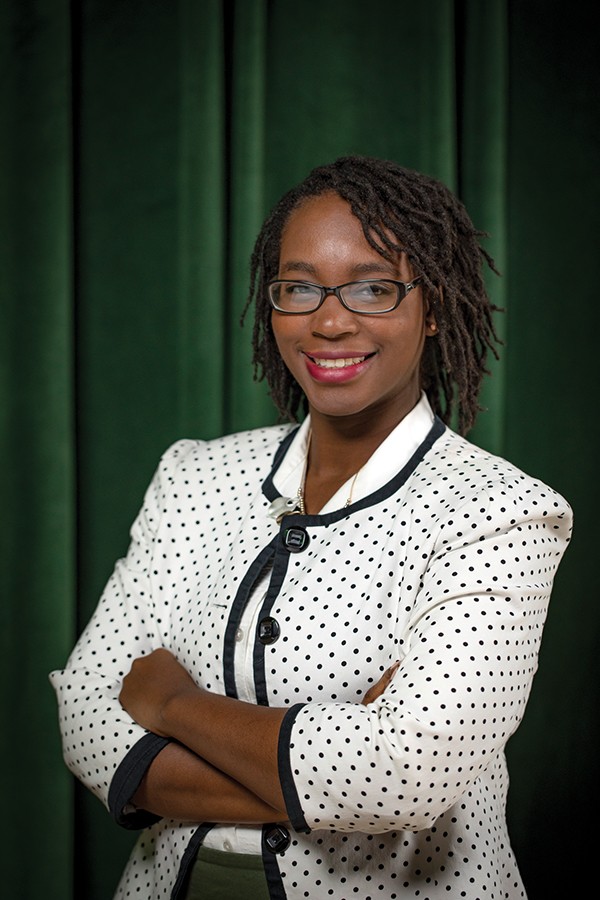
Natasha Bonner
Natasha Bonner
Mental Health Counsellor, Youth Villages
“I question why people do certain things, how our surroundings and environment impact us. Early on, I wanted to be a fixer. I was always told I was a great listener, so being a counsellor and psychologist probably fits. … I’ve put my focus on how trauma and PTSD impacts the brain, and helps people change course with a lot of psychotherapy.”
“I think a lot of people have started talking more about their depression and anxiety and mental health. It’s not such a bad stigma, because it’s not just me feeling the way I feel. … One of my mantras is, you can’t live a healthy life unless you’re mentally healthy as well. I experienced a lot of burnout. Then I myself started seeking counseling, and I have a mentor who is a psychologist as well. So really, just learning how to talk through my stress helps me impact others as well. … My mentor says, ‘Practice what you preach. You can’t pour from an empty cup.’
“I have a five-year-old and a three-year-old, so they’re my entire life.”
……

Josalynne Love
Josalynne Love
Director of Alumni Engagement, Teach for America Memphis
“When I was posted to Memphis [for Teach for America], I was ecstatic. I was placed in the same neighborhood where I grew up. My two-year commitment was the hardest thing I’ve ever done in my life. I realized you’re not just a teacher, you’re a mentor, you’re a motivator, sometimes a chauffeur, a coach, an advisor, everything. I think people think teaching is just one road, but it’s a multifaceted job you have to prepare for. I’m so happy I had Teach for America, because I got that additional support I needed.
“I think teachers definitely get the short end of the stick, and I would like to help our teachers take on more support from our city and the Board of Education. I would love to see education transformed so we can make our city globally competitive. In 20 years, I want to see our kids be able to compete with any and everyone they come in contact with.
“How can Memphians help their teachers? Ask them what they need! Sometimes teachers just need someone to help them grade papers. Help them with their classrooms, or maybe be mentors for their students. Because it’s such a multifaceted job, you never know what a teacher is going to need in the moment.”
……
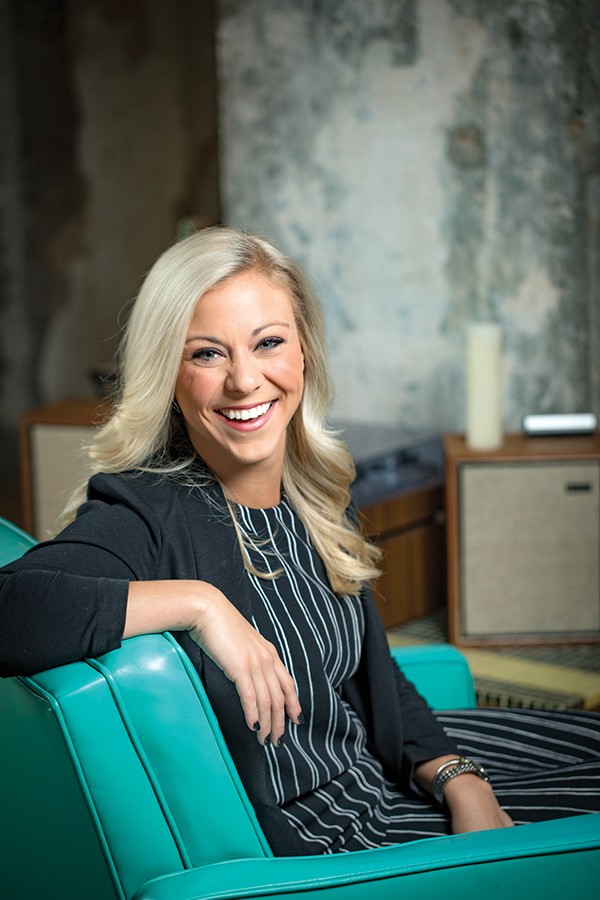
Francesca Biggam
Francesca Biggam
Development and Communications Coordinator, Meritan
Biggam says her millennial friends are “notorious job hoppers. … You’re job-hopping because you haven’t found something you love doing. I wake up every day with a smile on my face, because every day I’m raising money for someone less fortunate who is going to reap the benefits.
“I love giving back. I became the Gift of Life volunteer coordinator for the Rotary Club, and we had a patient who came from Honduras. I was with her from the airport through her hospital stay and recovery. Just seeing the smile on her face and seeing how healthy she was, that made it worth it.”
Biggam was Miss Memphis 2016. “It was absolutely amazing. Everything about the community engagement was amazing. I was able to be heard and to be a role model for several young girls in Memphis. It actually connected me to the Memphis Grizzlies, and I ended up being a Grizz Girl for two years after that. I retired this year, because I had too much on my plate with volunteering. I’ve had to learn to finally say no. I really enjoy volunteering my time and being able to help other that need it more than I do.”
……
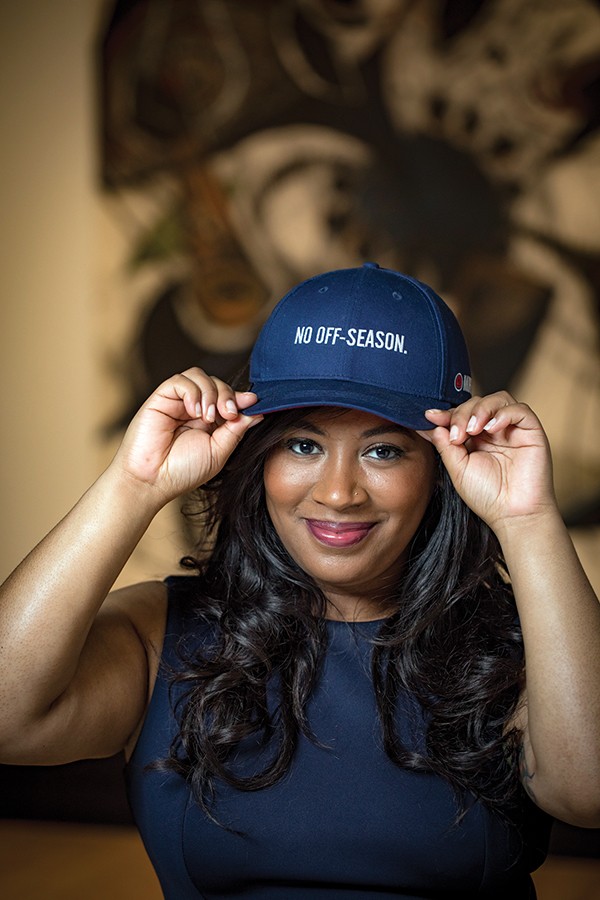
Diedra Brooks
Deidra Brooks
Founder, Chief of Staff, The Memphis Lift
“The Memphis Lift is a parent-created and -led nonprofit that was created three years ago to solve a big problem, which is lack of parental involvement. Many people thought that parents weren’t involved because they didn’t care, but the truth was that, especially here in Memphis, there are so many barriers to parental involvement. … “We create a space where parents can come, and create events specifically for them that fit their time, and make it so they can access the information they need to be a part of the conversation around education.
“There is so much hidden talent in Memphis, people who are in situations who have not gotten an opportunity for their talents to be developed or even expressed. When you have a single parent who is struggling to make ends meet and working multiple jobs, but they have a gifted child, that parent knows that they have a gifted child, but they may not have the language or know how to navigate the system to know what is best for the child. What’s unique about Memphis Lift is, we are that bridge. We connect parents to leaders and decision makers, and we connect them to the parents, so it’s a two-way street.”
……
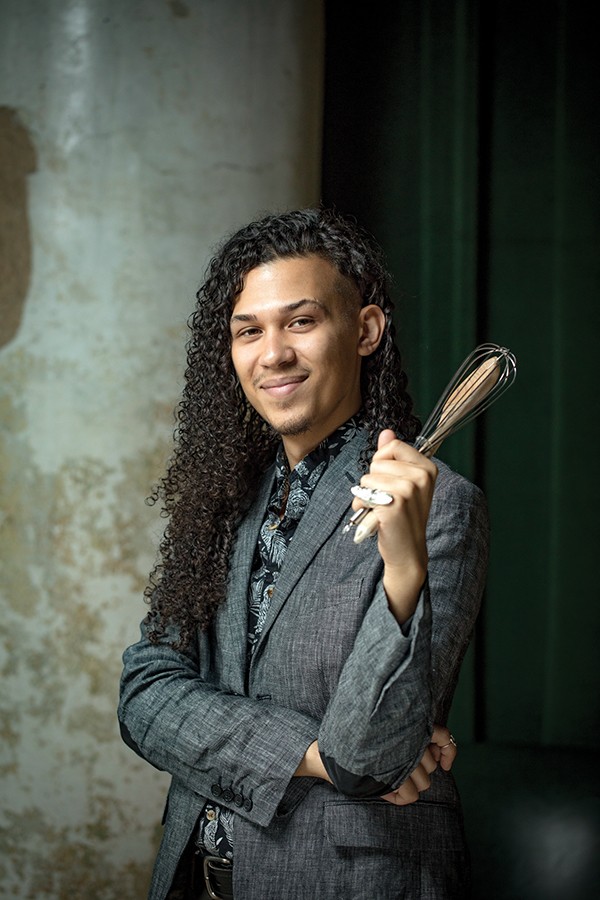
Jeremie Serrano
Jeremie Serrano
Office Manager, Latino Memphis
“I moved here for love. My boyfriend was here; he’s lived here his whole life, and he’s getting his PhD at U of M. I used to work retail, but I wasn’t satisfied. I felt like I wasn’t helping people. So I went looking for a place to help people, and that’s when I got involved with Latino Memphis. “I think the biggest culture shock was, where I come from, we have all kinds of different races and all kinds of different faces, but when I came here, I saw the lack of that. But once I got involved, I see that there are many different cultures here — they’re just underrepresented.
“I think people come here with a dream. … I call myself a privileged Latino, because I come from Puerto Rico, which is a commonwealth. I didn’t know what the process was for these people coming here. I didn’t really go through any struggle. But when I started working with people, I realized they are all so different. They come here because there might be danger in their communities back home. They come here because they want their children to grow up in a nice environment where they can go to college and have a better life than they did. I think Memphis is an awesome, welcoming city to many of these people.
“I thought I’d be moving away after my boyfriend graduated. But recently, I see the growing community. I see Memphis is changing for the better. I really have that community feeling I’ve been looking for.”
……
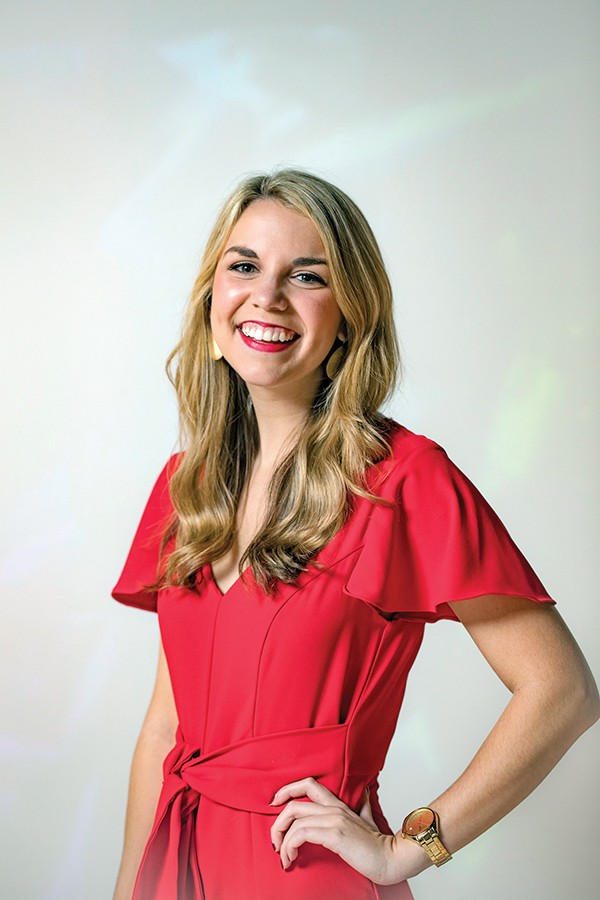
Allie Lindsey
Allie Lindsey
Development Manager, Hope House
“Hope House does so many things, it’s hard to put it all together at once. It’s a nonprofit that does so much for people, but the main vision of Hope House is to help families affected by HIV and poverty. So we provide daycare and preschool free of charge. We have a housing program, a food pantry, individual therapy, group therapy, case management. There are so many resources for families and individuals living with HIV in this city because of Hope House.
“There’s a lot of misconceptions and stigmas around HIV, even now in 2019. Hope House is trying to myth-bust all those things about how HIV is spread, not only for the safety of our community, but so they also understand that people living with HIV are just like anybody else. They didn’t do anything bad or wrong. You can’t get HIV by touching them.
“It’s really emotionally hard. My last job was at Make-A-Wish, so most of my career has been in emotionally challenging nonprofits, people who are doing really good work for really, really sad causes. I’m over our holiday program at Hope House … It was really hard for me to see these kids’ wish lists. They don’t have socks and shoes and coats and hats. That’s what’s on their wish lists. If I ask for a coat, it’s because I want a new one or a different color. For them, they don’t have one at all.”
……
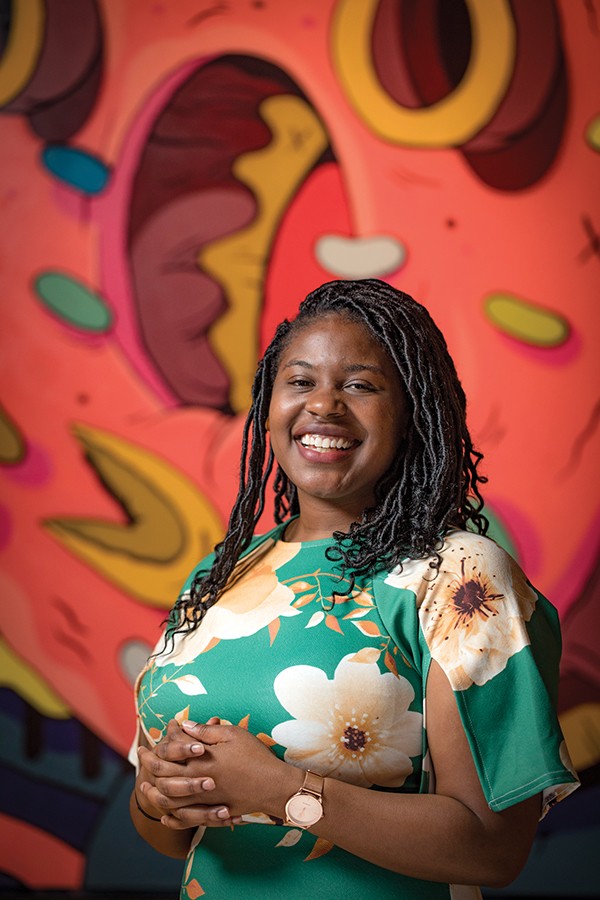
Ophrah Payne
Ophrah Payne
Coordinator, University of Memphis Student Success Program
“For me, education is a broad spectrum that comes to circle a full life. … I took a gap year in undergrad and worked at the Trio Student Success program here at the University of Memphis and fell in love with students who were just like me — first generation, low income, or had an academic disability.
“I fell in love with the mission of helping somebody who needed the same leg up in life that I did. I know I wanted to go to college, and my mom pushed me in that direction, but I didn’t know what do to, how to navigate college, the mechanics of it, and what is being an actual college student. It’s overcoming the barrier of being a first generation. You being the first in your family to go to college. Double identities — your parents and peers expect you to be one way, but you are growing and developing in the college institution in another way. I see a lot of the struggles that I had in undergrad with that. When they come into my office, it’s like a counseling session.
“How am I going to make it from point a to point b, because I don’t have the income, but I don’t want to let college go? Pushing toward a better life and wanting to do more and better for themselves. It’s a culture shock for them. … I love to be the person who holds their hands and takes them through that process.”
……

Nur Abdalla
Nur Abdalla
Coordinating Curator, Pink Palace Memphis Bicentennial Exhibit
“It’s an extremely large exhibit, for an in-house exhibit that we’re doing here. …We didn’t want it to be a ‘coffee table’ exhibit — Memphis is great, and it’s always been great, and it will continue to be great. We wanted it to be a balanced representation of the good, the bad, and the ugly.
“For me, who has a strong connection to Memphis and my family, and also living here being a Muslim woman, and the daughter of an immigrant on my dad’s side, and the daughter of an African American on my mom’s side, I felt very strongly that there should be a personal connection. Voices should be highlighted that have been getting overlooked. … I wanted to be sure we were being as inclusive as possible.
“I would say that I think we’re kind of getting to what I would like to envision — the deeper understanding of the layers and complexity of our story, and how that affects our present and will effect our future. … I hope I can be a part of addressing that connection between the past and the present, and how that can help us in dealing with the future.”
……
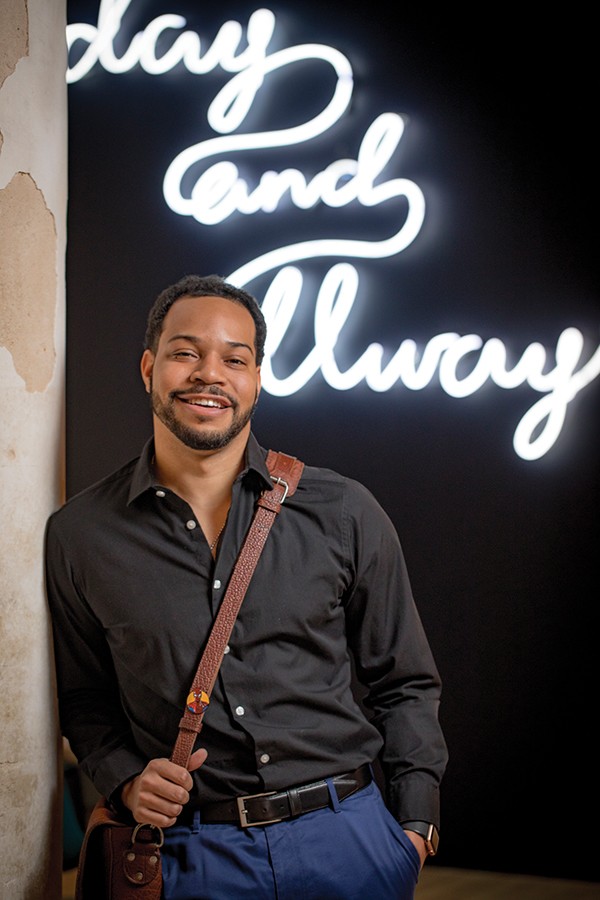
Chris Porter
Chris Porter
Designer, Owner of Creative Punch and Pillow Tees
While working with the Downtown Memphis Commission, Porter designed the new Beale Street sign. “Being able to design something iconic in the city is humbling to me, because I love this city so much. … To me, that is the ultimate way of committing to a community, when you invest your skills to positively impact it. I was so used to seeing it on my laptop, for so many hours designing it, that seeing it lit up, it’s a wonder for me.”
Porter recently resigned from the DMC to pursue his own businesses. “I have a passion to make an impact in my community and follow my dream and my passions: designing, branding, videography. The things I was doing at the DMC, now I get to do for more people, more often.
“Memphis has given me so much. It’s given me an opportunity to advance my career. It’s given me people who are fantastic friends. It gave me a chance to play [soccer], the sport I love, in college. I want to give back to this city. Staying here is part of that passion to give back.”
……
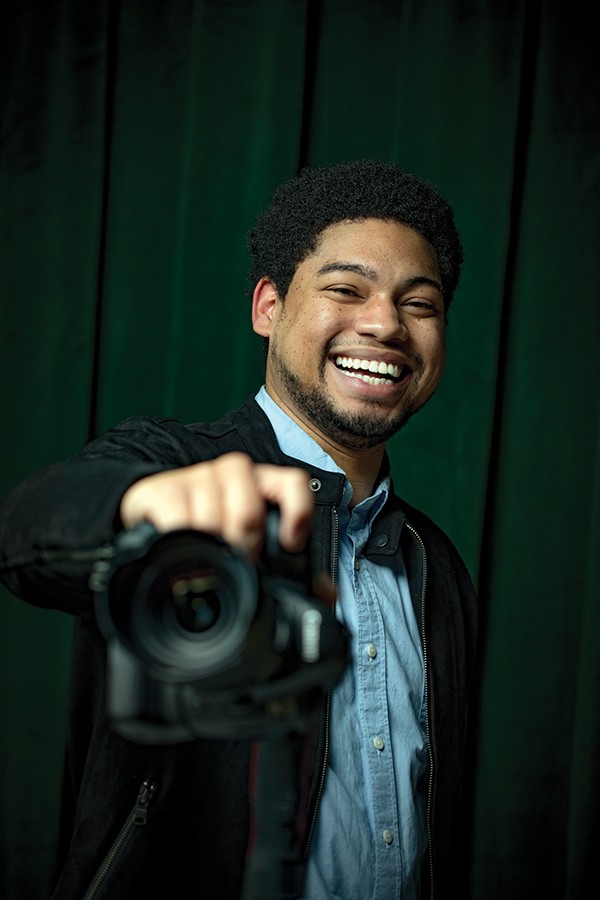
Bronson Worthy
Bronson Worthy
Social Media Specialist, Methodist LeBonheur Healthcare
“Trayvon Martin died when I was at Vanderbilt. … There were a couple of freshmen on campus who reached out to some upperclassmen looking to do a campaign. I was the only one who answered. I realized that, even though I was leading the campaign, the stuff I wasn’t delegating was the marketing. In hindsight, I tended to hold onto those tasks because I really enjoyed them. During that campaign, we had a teach-in and a very solutions-oriented rally. We wanted to expose the campus to the news and let folks know, but also to figure out how to improve the situation, not just gripe about it. Having an effect on campus really showed me that there was a possibility that I could have a career.
“My mom is a teacher, and my dad is a police officer. I was accustomed to seeing their work affect people. It’s how I was brought up. Now, I have the opportunity to use those talents to help people, health-wise, in my work for Methodist.
“I feel like I have to have faith that we are making progress. … Where there’s a will to make change, it will come to pass.”
……
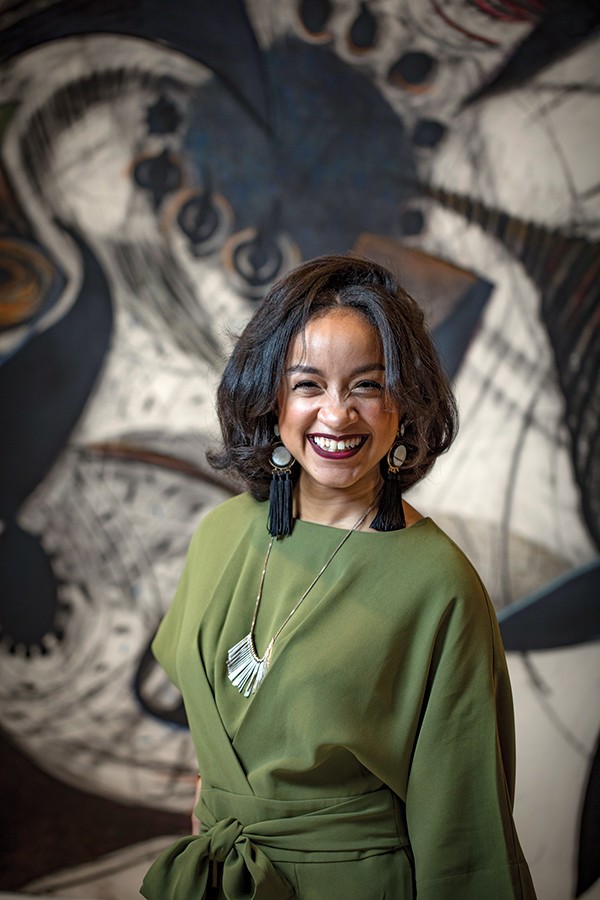
Chloe Moore
Chloe Moore
Continuous Improvement Specialist, Seeding Success
Moore is a native Memphian who attended Rhodes College. “I had loved Memphis as an idea. It was a fun place to be, and I knew it had historical importance. But the anthropology and sociology department at Rhodes gave me the tools to understand things like society, social systems, cultures, and kind of the background forces that made Memphis look the way it did. That type of education gave me a more intimate understanding of myself, the city, and the larger, global perspectives that have fueled almost everything I do now. It’s a journey from judgment to questioning. It makes you a perpetual student.”
Seeding Success is a nonprofit that “has positioned itself as supportive to other agencies [and] allows us to coordinate things really well. It’s a data driven, accountable culture that prioritizes people and leadership. It’s a really cool organization that helps give other organizations bandwidth to do their work.”
“The Memphis that I want to see is a Memphis that really understands itself as somewhere that’s unique, and one that has its systems designed so it serves its people with both dignity and joy for everybody who lives here. To make this place one of equal opportunity and access, and one that really honors its rich history.”
……
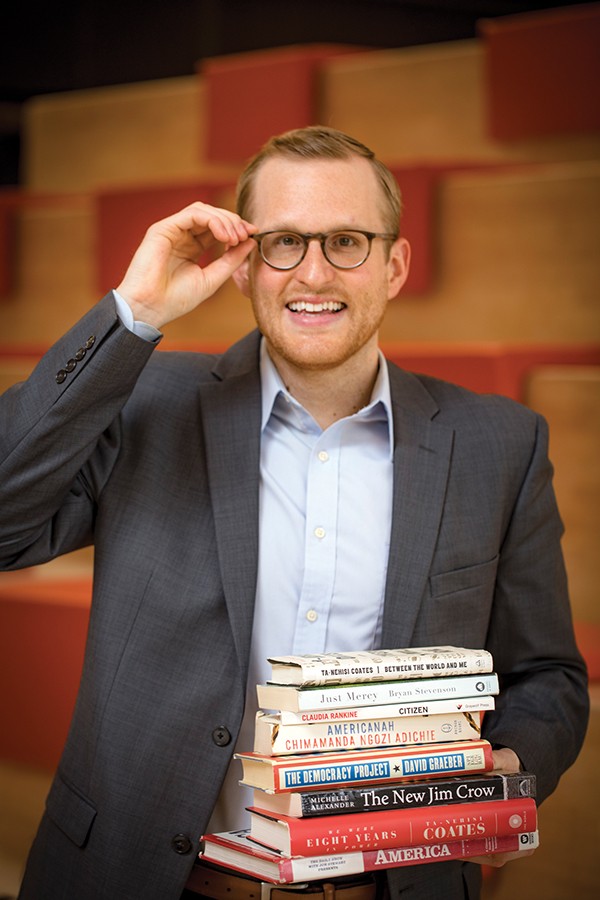
Austin Crowder
Austin Crowder
Government and Economics Teacher, Soulsville Charter School
“It’s such a crucial subject area. Unfortunately, I think in a lot of schools it’s given a secondary focus, to the disservice of our society. I think we’re experiencing some of the consequences of that, in some of the divisive and unfortunate complexities we’re facing as a society right now. … I’ve been able to develop a curriculum that I believe is responsive to our current circumstances and context. For instance, one aspect of my curriculum is a unit I’ve developed called Know Your Rights. We spend about a week and a half diving into the intricacies and nuances of what rights civilians have in interacting with law enforcement, what rights police officers have. We do a role-playing component, case studies about interactions between police and civilians that have gone really well, and ones that haven’t.
“I decided to become a Memphis City Council candidate. I did that to show my students what they could do someday. I believe that my students would do a phenomenal job representing their communities, so I wanted to encourage them to run for office one day. I’ve been taking them, step by step, through the process. It demystifies running for office.”
……
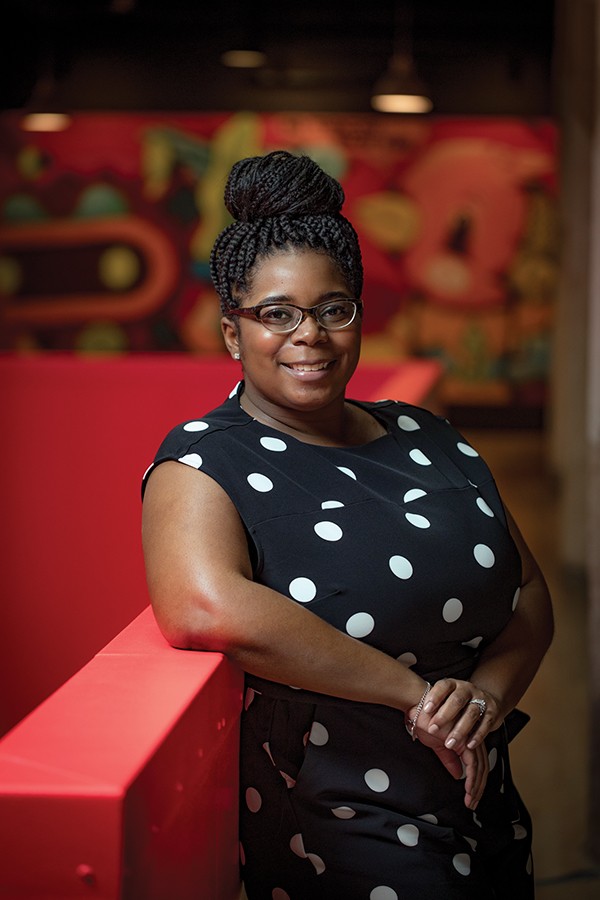
Ashley Jones
Ashley Jones
Nursing Student, University of Tennessee Health Science Center
After earning a master’s degree in public health, Jones worked as an educator for Planned Parenthood of Tennessee and North Mississippi. “I did all phases of reproductive health: pregnancy prevention, STI prevention. I ran all the peer education programs, like one we called Sexperts, geared toward college students who wanted to become peer educators on campuses. … “I can talk about reproductive health and sex all day. It was definitely fun. It was one of those jobs that people are like, ‘You really get paid to do this?’ Yes I do.
“I worked in reproductive health for four years, and after learning about all the health disparities in the city, I wanted to do more, to learn more about heath in general. That was my inspiration in going to nursing school. I knew there were so many other things going on in our city besides high HIV rates — those are through the roof. There were so many other health disparities that I wanted to learn about them, and couple that with my previous public health background. I want to do more public policy level work to help combat some of the health issues that are in this city.”
……
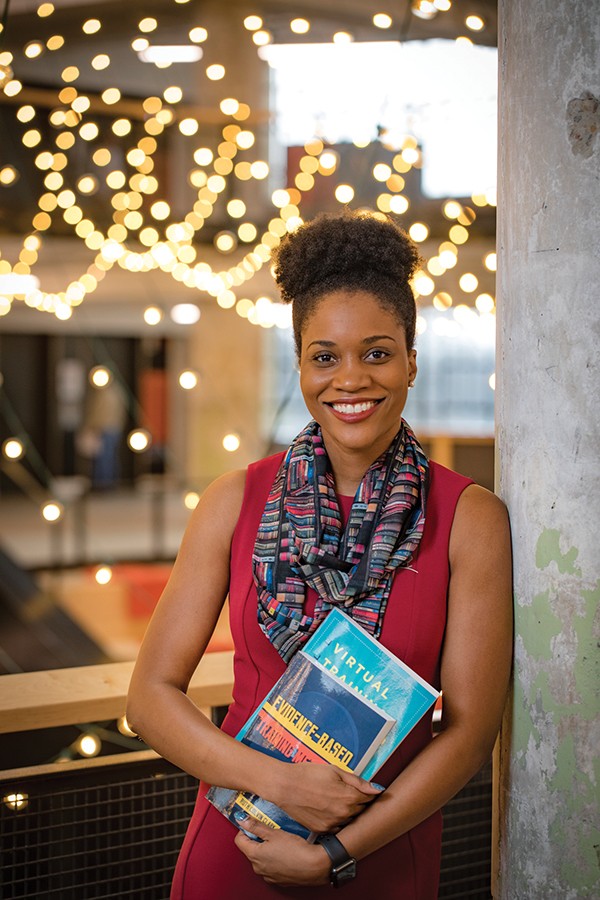
Rachel Anderson
Rachel Anderson
Instructional Designer, St. Jude Children’s Research Hospital, ALSAC
“I design curriculum and learning programs on a variety of topics, depending on what’s needed for our employees to work together as a team: leadership skills, communication skills, all sorts of things. … ALSAC is like a big small company. We have about 1,500 employees dispersed throughout the United States, but the main campus is here in Memphis.
“It really is a great place to work. You feel proud that what you’re doing is helping the kids over at St. Jude. You cry all the time when you work here. It’s a great reminder that your work matters. Even though I’m not directly affecting kids, I know that I’m helping our ALSAC employees gain the skills they need to raise the funds so we can support the hospital.”
“I’ve always loved the learning field — anything to help people be more effective in their personal or professional lives. ‘Things I Wish I Knew’ was a passion project where I brought in a lot of young adults and asked them, ‘What are the things you wish you knew in high school or college?’ I interviewed them on video for less than four minutes. We all have something that we wish someone would have told us.”
……
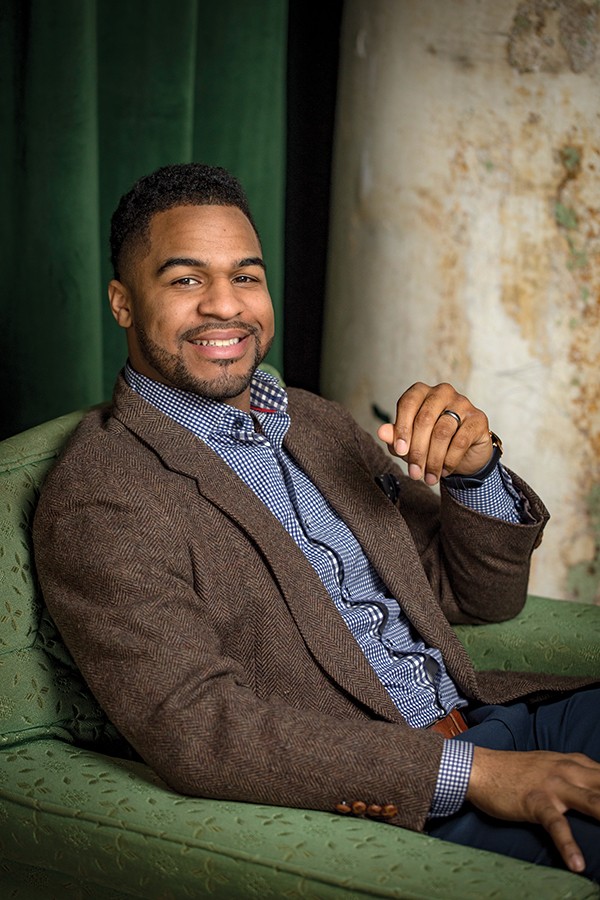
Alton Cryer
Alton Cryer
Business Development Officer, Orion Bank; Co-founder, STS Enterprises
“I went to Jackson State university straight out of high school. I had a twin sister who was diagnosed with leukemia, so I returned home to help support the family. I ended up attending the University of Memphis. In my junior year, I became engaged in the community. I met some people who were interested in getting me involved and engaged with Memphis. Just seeing Memphis as a space with opportunities to connect, where it’s easy to connect, is kind of like a big small city, where everybody knows everybody. I fell in love with empowering our youth. That’s kind of where we started. I saw so many opportunities for developing our youth, and I saw that Memphis is where I wanted to be. There’s so much opportunity for us to grow as a city. I wanted to be a part of that.”
While at U of M, Cryer co-founded STS Enterprises. “We are a nonprofit, 501c3 organization with the mission of empowering youth and college students everywhere to make excellence the norm. We have about 80 volunteers that operate as a team, from marketing to program development, to move it forward. … We work with more than a hundred students annually, both high school and college. To date, we’ve worked with about 7,000 students.”
……
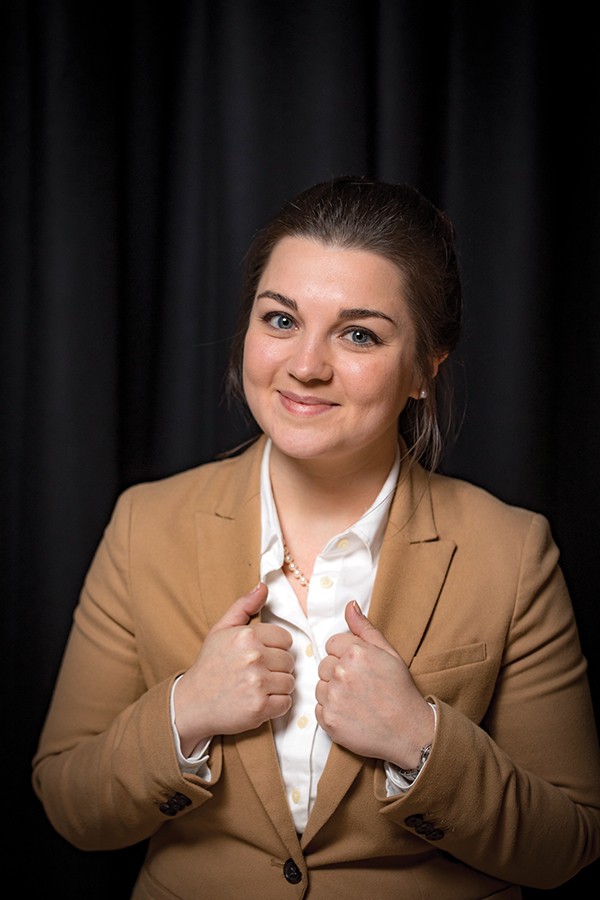
Kaitlin Beck
Kaitlin Beck
Shelby County Public Defender
“When I came to Memphis, I worked at the District Attorney’s office. … I learned a lot about myself. I’m an empath, and I’m able to connect with people. I was a victim coordinator, so I was working with people who had crimes happen to them, trying to help them navigate the legal system. My empathy was very useful there. But I also found myself empathizing quite frequently in juvenile court with the children who had been accused. I was thinking about what were the systemic problems that led to these children going out and doing these alleged acts? Where are their parents? What are their neighborhoods like?
“There’s nothing that can prepare you for the shock of how much work there is to do, and how many clients you will end up having, and how much more you will wish you could do for everyone. But I would say that I’m recovering well from the initial shock, and doing the best I can for people.
“I think we’re all products of our environment and our chemistry. If I have a client, they have probably also been a victim at some point. I think other people lose sight of that. That’s why I wanted to use my energy productively, helping people that maybe other people can’t sympathize with.”
……
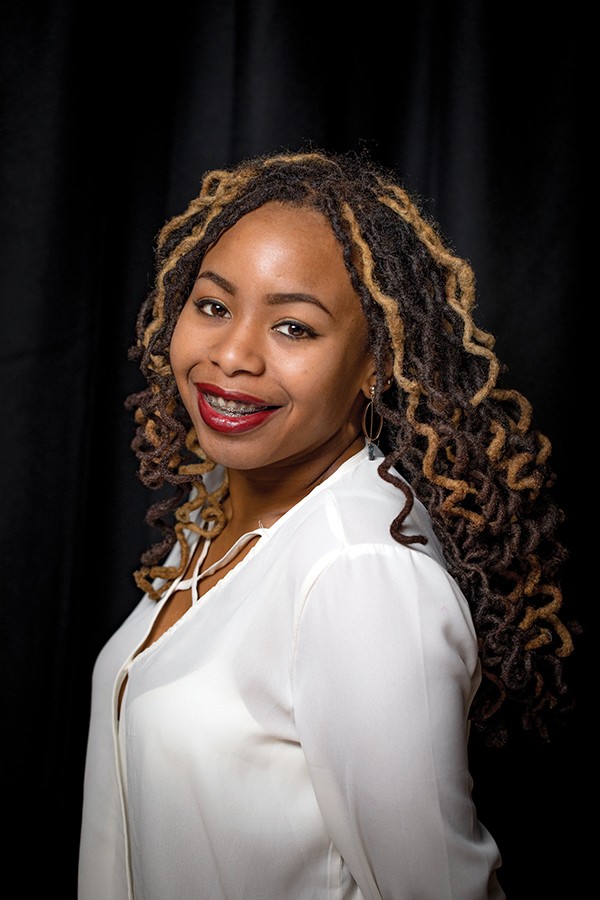
Amanda Willoughby
Amanda Willoughby
Filmmaker, Indie Memphis Youth Film Festival Mentor Coordinator
“I knew I wanted to get into film, because all I wanted to do in my free time was watch movies. I would literally try to watch a different movie every single day, so I could have as much knowledge as possible. “I’ve been working with kids ever since I was at the Neighborhood Christian Center when I was 20. … When I got to Cloud 901, the video lab was completely bare. There were very few kids going there. They didn’t have someone there to hold it down full time. So I hit the ground running, starting a show called Cloud Focus. … The most rewarding experience has been that I’m seeing the rise of the next generation of filmmaking.
“At Indie Memphis, we pair local filmmakers and professionals in the industry with teenagers who create their own short films.
“I’m working on the script for a film called How to Make Love to Men. We’re launching a crowd-funding campaign in February, so look out for that. At the same time, Not Your Ordinary Films is working on two web series we’ve already produced. One of them is called Not Your Ordinary Black Girls, which is about three women with superpowers. The other is a drama entitled This Can’t Be Life. We’re working on scripts for season two of both of those.”
……
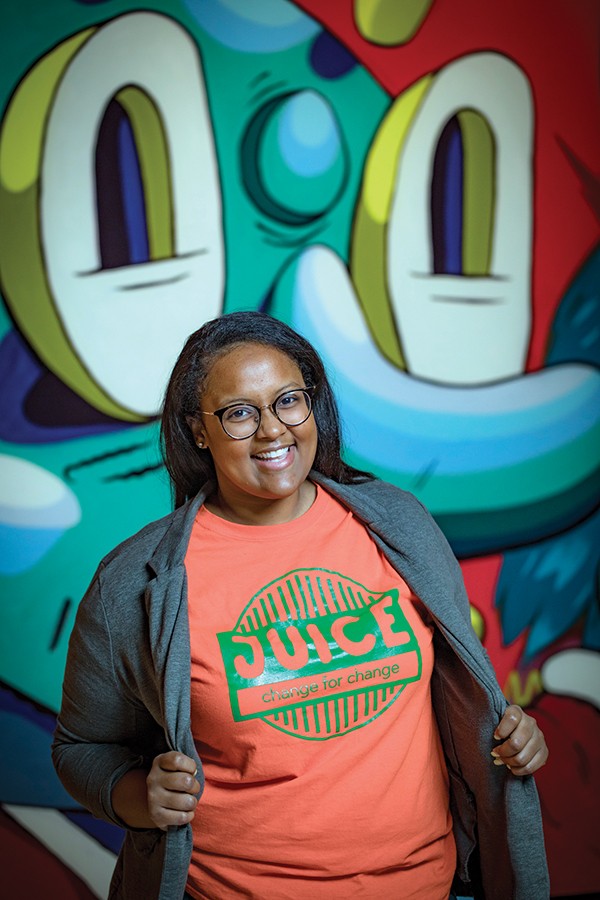
Brittany Thornton
Britany Thornton
Founder, JUICE Orange Mound
Thornton taught English in Thailand when she was 22. “I was the only African American in the whole town, for a whole year. When people liked me, I always took it down to Memphis, like I was a Memphis ambassador. I took a lot of pride in that role, exposing people to a different way of thinking, just being a global citizen.
“I have a survivor’s spirit. I’ve taught in SCS and charter schools, and I’ve just learned to survive and give the best education I can give. I make the student my top priority.”
“I think Juice has played a vital role in reshaping the narrative around Orange Mound. We’re the homegrown funding source for Orange Mound. … We’ve organized quarterly canvasses to go door to door collecting spare change from residents. We pool that money and use it to start projects. In this real revolutionary way, people don’t have to tell us our priorities. We can prioritize for ourselves and make an impact.
“I really geek out on advocacy work. I love going to community meetings, having thoughtful conversations. Just yesterday, I was addressing slumlords in project-based Section 8 housing, then I left that meeting and I went to talk about bus transit advocacy work. It seems like I can’t get enough of it.”
Editor’s note: Our thanks to Bianca Phillips and Crosstown Arts for all their help and hospitality during our photo shoot.
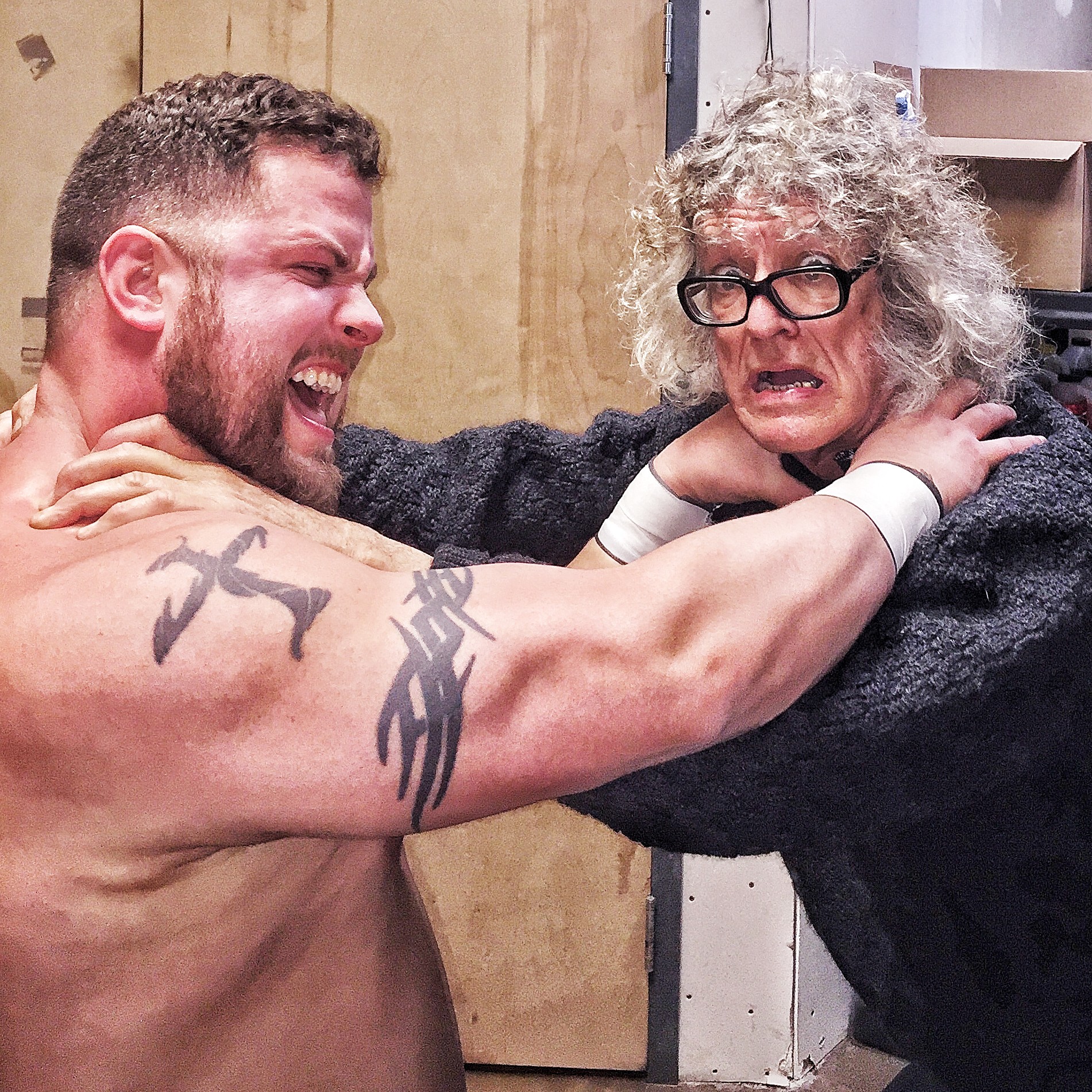
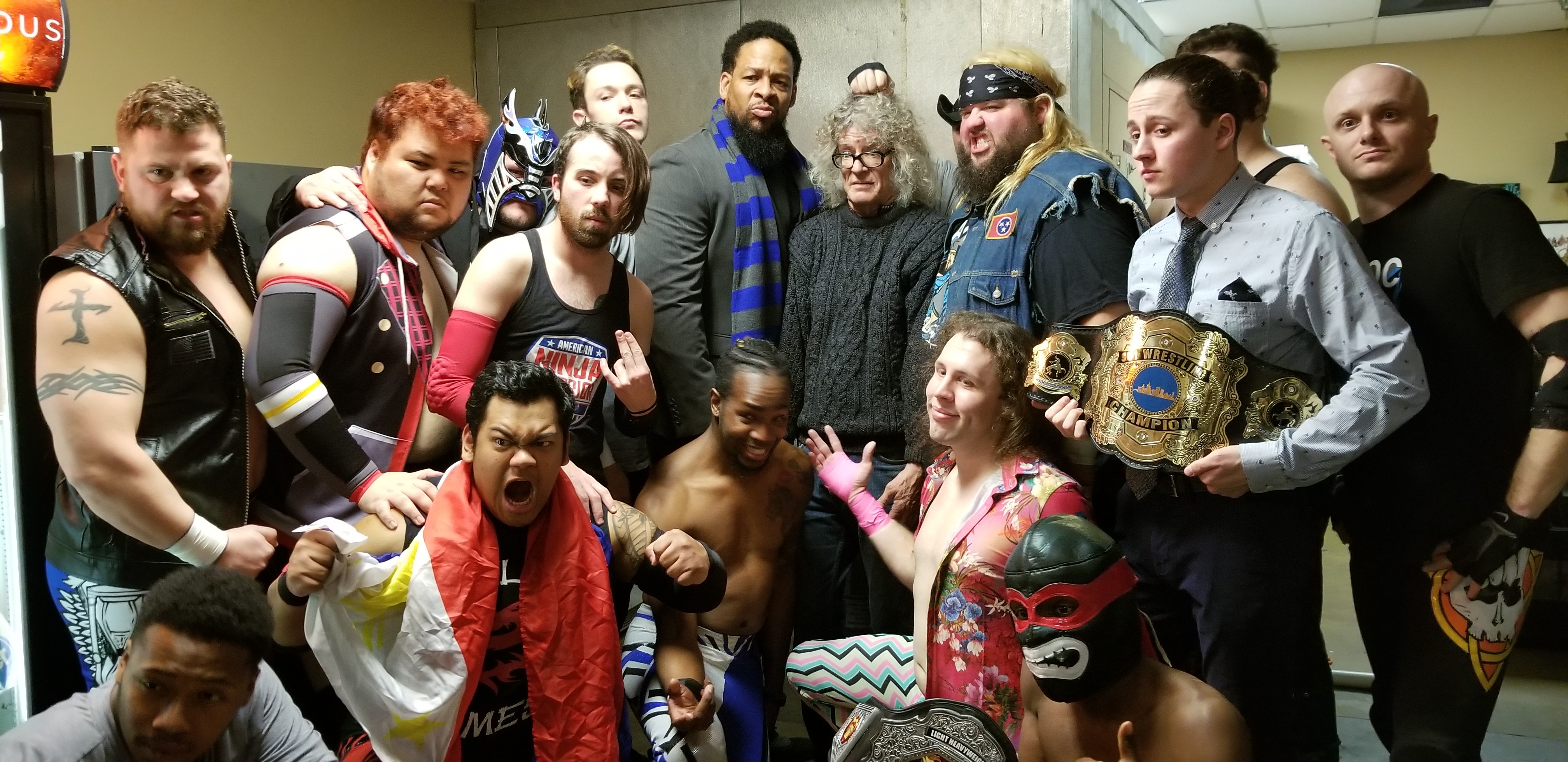
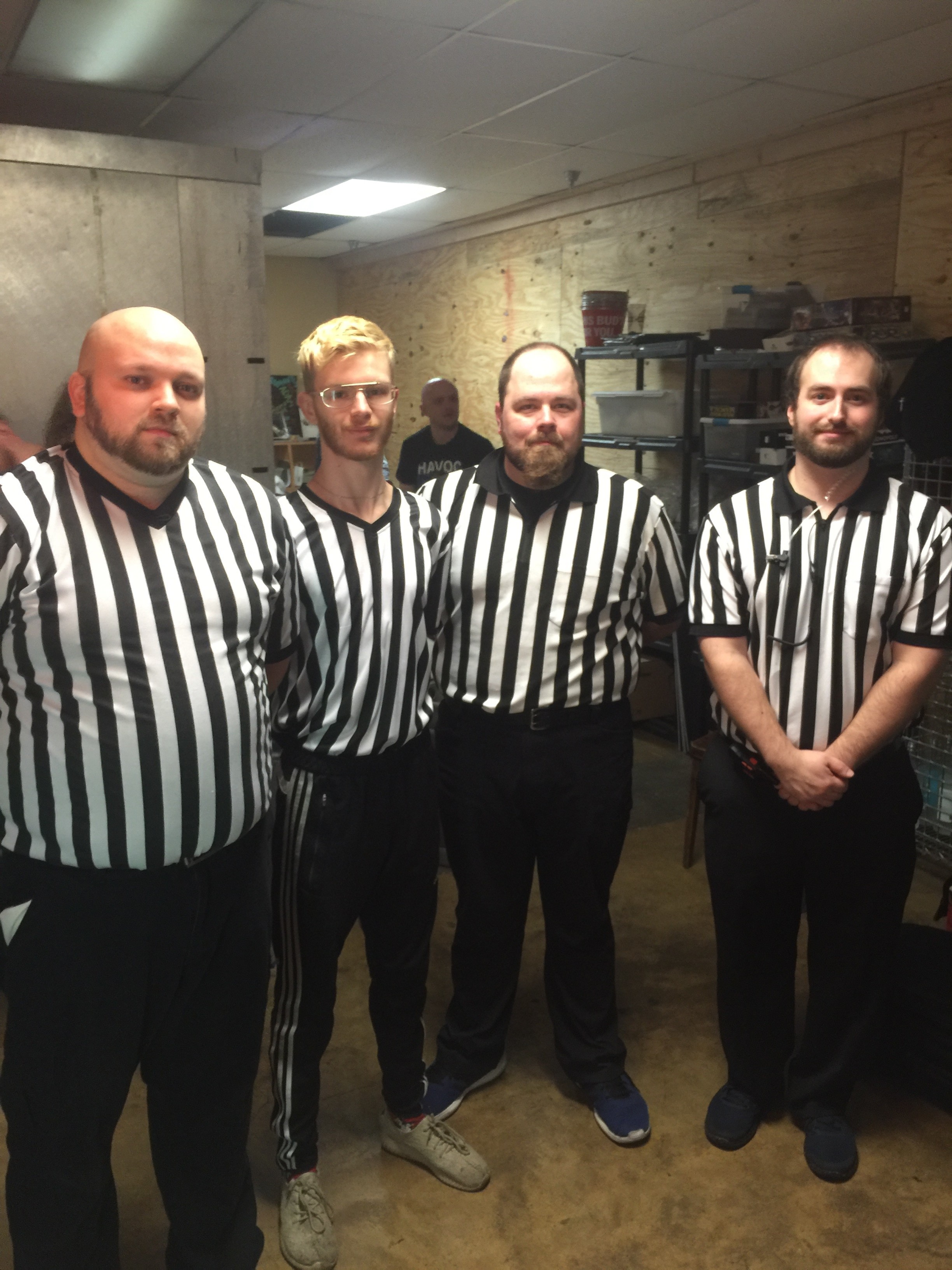 Michael Donahue
Michael Donahue  Michael Donahue
Michael Donahue 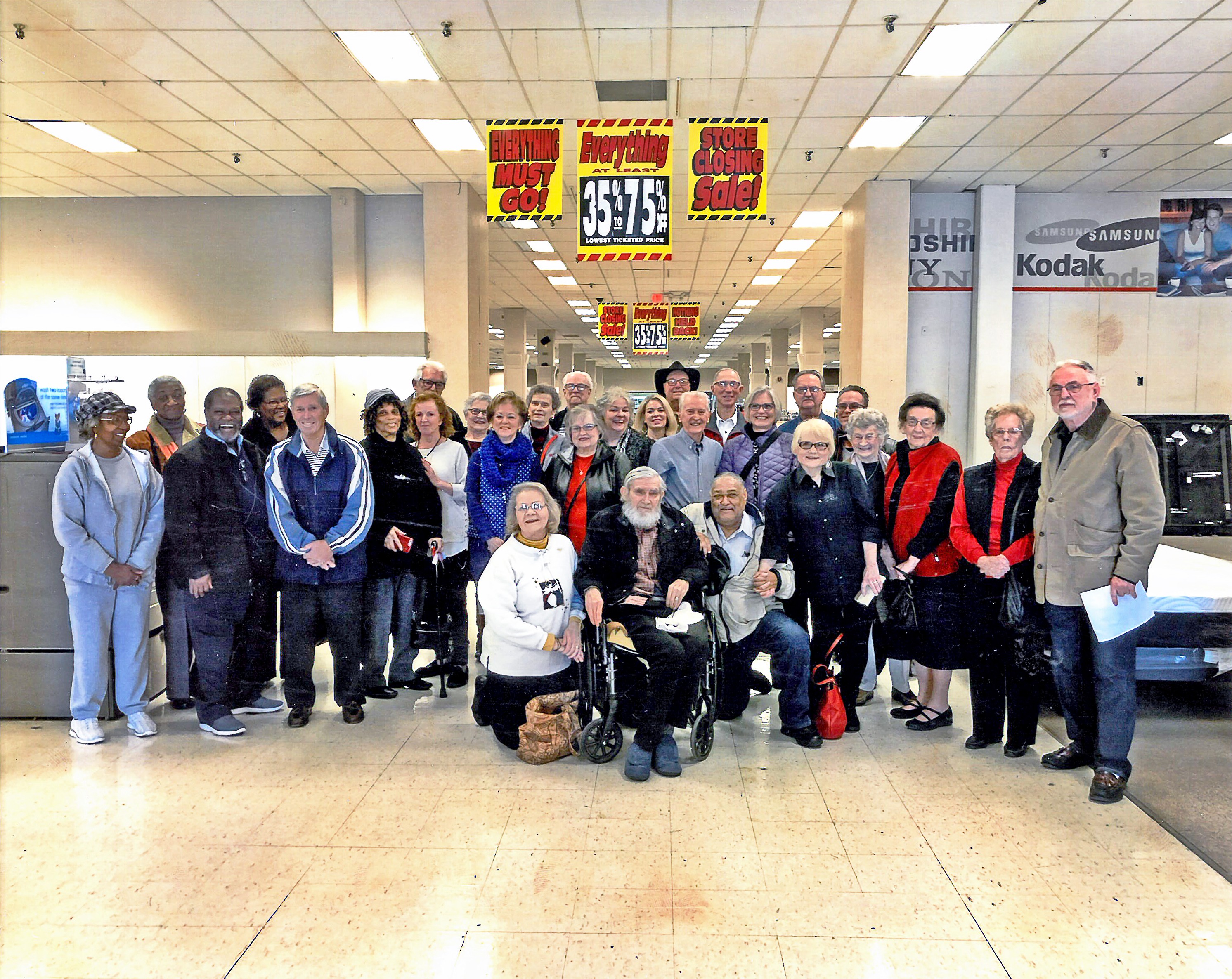

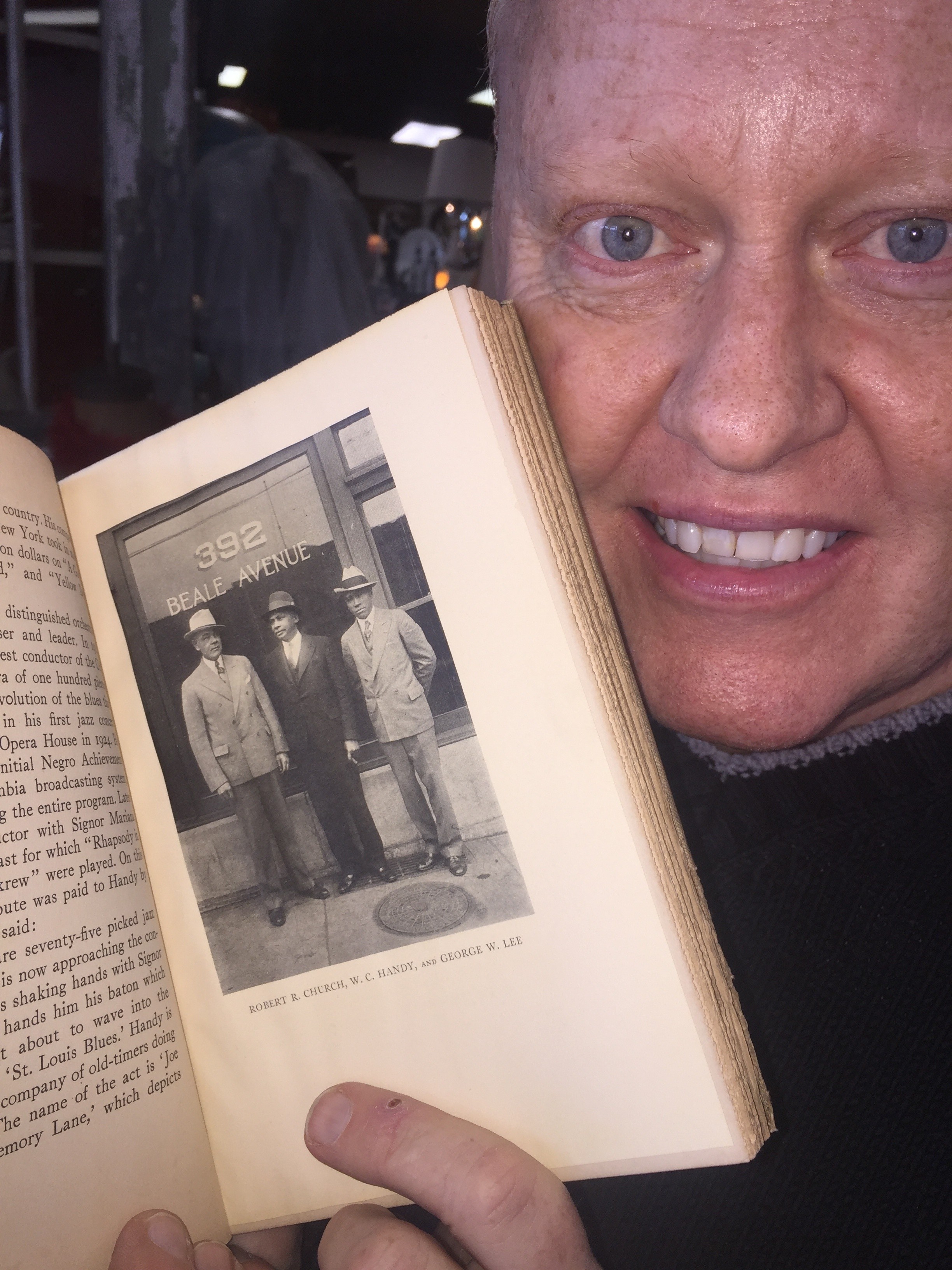 Michael Donahue
Michael Donahue 

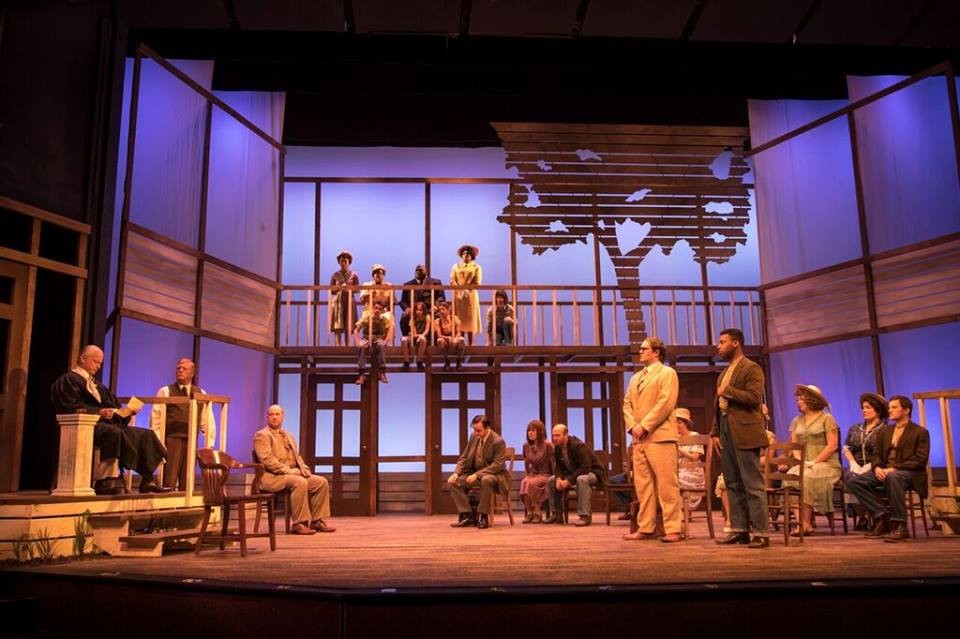 Theatre Memphis
Theatre Memphis 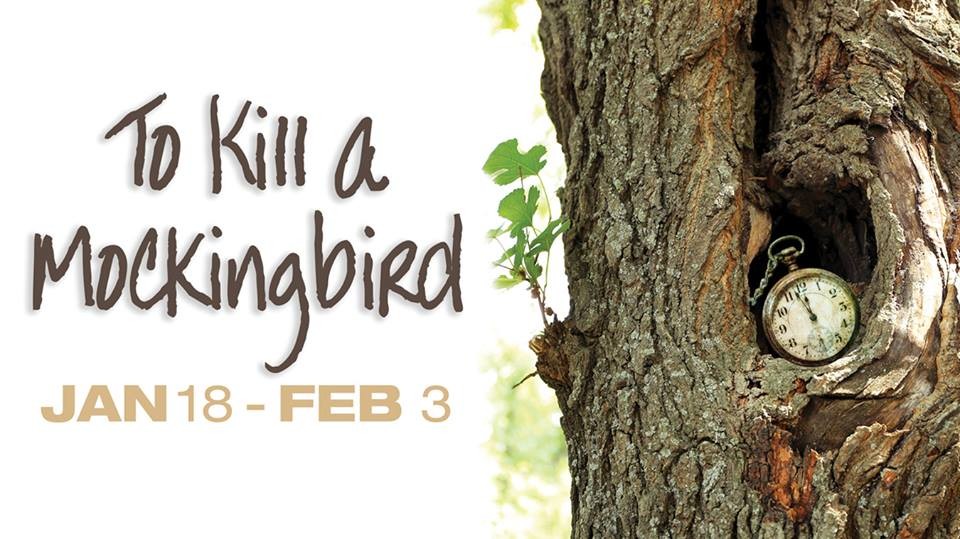
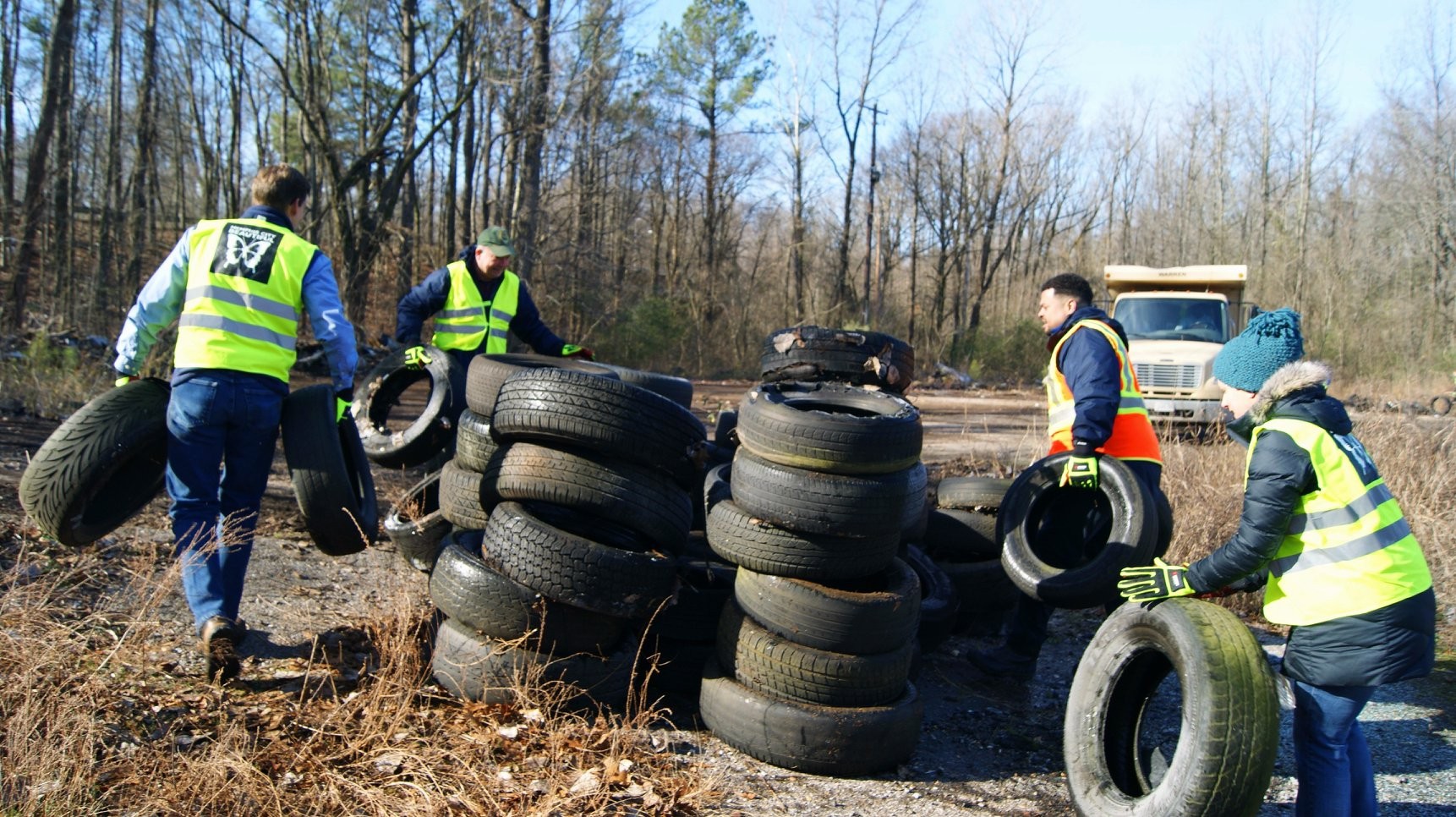 Facebook- Michael Meister
Facebook- Michael Meister  Facebook- Michael Meister
Facebook- Michael Meister 
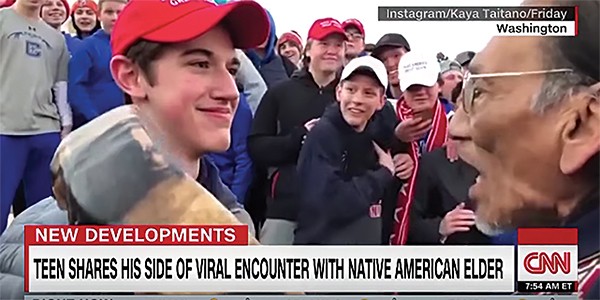
 Photographs by Justin Fox Burks
Photographs by Justin Fox Burks 




















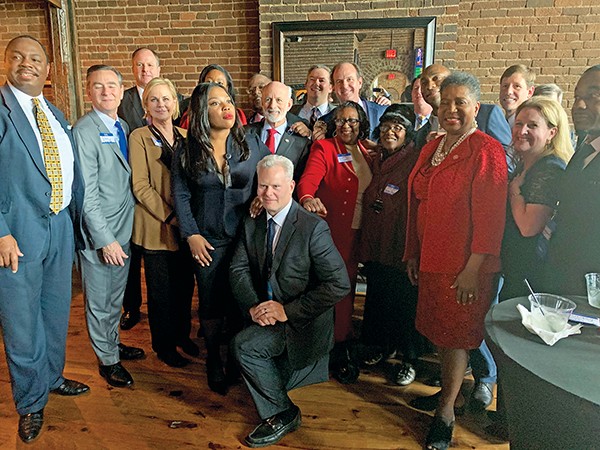 Jackson Baker
Jackson Baker 